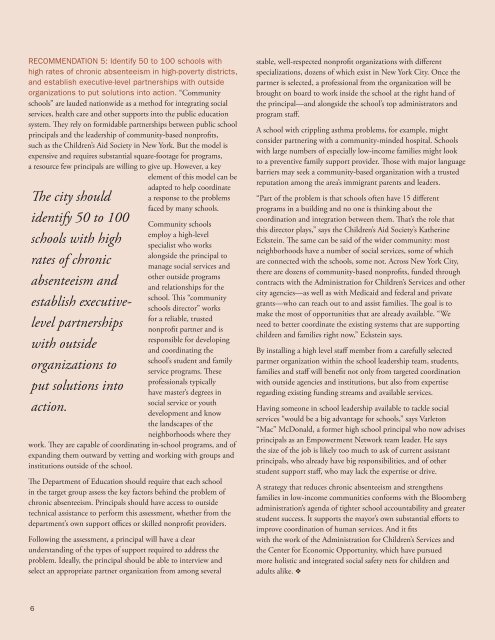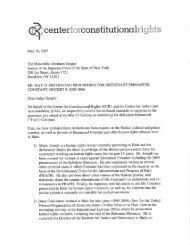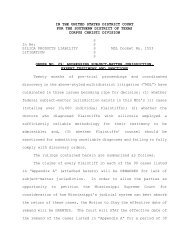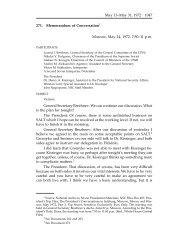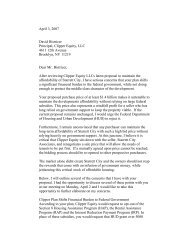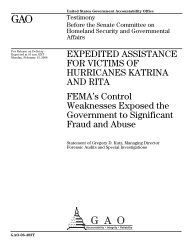Strengthening Schools by Strengthening Families
Strengthening Schools by Strengthening Families
Strengthening Schools by Strengthening Families
Create successful ePaper yourself
Turn your PDF publications into a flip-book with our unique Google optimized e-Paper software.
RECOMMENDATION 5: Identify 50 to 100 schools with<br />
high rates of chronic absenteeism in high-poverty districts,<br />
and establish executive-level partnerships with outside<br />
organizations to put solutions into action. “Community<br />
schools” are lauded nationwide as a method for integrating social<br />
services, health care and other supports into the public education<br />
system. They rely on formidable partnerships between public school<br />
principals and the leadership of community-based nonprofits,<br />
such as the Children’s Aid Society in New York. But the model is<br />
expensive and requires substantial square-footage for programs,<br />
a resource few principals are willing to give up. However, a key<br />
element of this model can be<br />
adapted to help coordinate<br />
The city should a response to the problems<br />
faced <strong>by</strong> many schools.<br />
identify 50 to 100<br />
Community schools<br />
employ a high-level<br />
schools with high specialist who works<br />
alongside the principal to<br />
rates of chronic manage social services and<br />
other outside programs<br />
absenteeism and and relationships for the<br />
school. This “community<br />
establish executive- schools director” works<br />
for a reliable, trusted<br />
level partnerships nonprofit partner and is<br />
responsible for developing<br />
with outside<br />
and coordinating the<br />
school’s student and family<br />
organizations to service programs. These<br />
professionals typically<br />
put solutions into have master’s degrees in<br />
social service or youth<br />
action.<br />
development and know<br />
the landscapes of the<br />
neighborhoods where they<br />
work. They are capable of coordinating in-school programs, and of<br />
expanding them outward <strong>by</strong> vetting and working with groups and<br />
institutions outside of the school.<br />
The Department of Education should require that each school<br />
in the target group assess the key factors behind the problem of<br />
chronic absenteeism. Principals should have access to outside<br />
technical assistance to perform this assessment, whether from the<br />
department’s own support offices or skilled nonprofit providers.<br />
Following the assessment, a principal will have a clear<br />
understanding of the types of support required to address the<br />
problem. Ideally, the principal should be able to interview and<br />
select an appropriate partner organization from among several<br />
6<br />
stable, well-respected nonprofit organizations with different<br />
specializations, dozens of which exist in New York City. Once the<br />
partner is selected, a professional from the organization will be<br />
brought on board to work inside the school at the right hand of<br />
the principal—and alongside the school’s top administrators and<br />
program staff.<br />
A school with crippling asthma problems, for example, might<br />
consider partnering with a community-minded hospital. <strong>Schools</strong><br />
with large numbers of especially low-income families might look<br />
to a preventive family support provider. Those with major language<br />
barriers may seek a community-based organization with a trusted<br />
reputation among the area’s immigrant parents and leaders.<br />
“Part of the problem is that schools often have 15 different<br />
programs in a building and no one is thinking about the<br />
coordination and integration between them. That’s the role that<br />
this director plays,” says the Children’s Aid Society’s Katherine<br />
Eckstein. The same can be said of the wider community: most<br />
neighborhoods have a number of social services, some of which<br />
are connected with the schools, some not. Across New York City,<br />
there are dozens of community-based nonprofits, funded through<br />
contracts with the Administration for Children’s Services and other<br />
city agencies—as well as with Medicaid and federal and private<br />
grants—who can reach out to and assist families. The goal is to<br />
make the most of opportunities that are already available. “We<br />
need to better coordinate the existing systems that are supporting<br />
children and families right now,” Eckstein says.<br />
By installing a high level staff member from a carefully selected<br />
partner organization within the school leadership team, students,<br />
families and staff will benefit not only from targeted coordination<br />
with outside agencies and institutions, but also from expertise<br />
regarding existing funding streams and available services.<br />
Having someone in school leadership available to tackle social<br />
services “would be a big advantage for schools,” says Varleton<br />
“Mac” McDonald, a former high school principal who now advises<br />
principals as an Empowerment Network team leader. He says<br />
the size of the job is likely too much to ask of current assistant<br />
principals, who already have big responsibilities, and of other<br />
student support staff, who may lack the expertise or drive.<br />
A strategy that reduces chronic absenteeism and strengthens<br />
families in low-income communities conforms with the Bloomberg<br />
administration’s agenda of tighter school accountability and greater<br />
student success. It supports the mayor’s own substantial efforts to<br />
improve coordination of human services. And it fits<br />
with the work of the Administration for Children’s Services and<br />
the Center for Economic Opportunity, which have pursued<br />
more holistic and integrated social safety nets for children and<br />
adults alike. ❖


